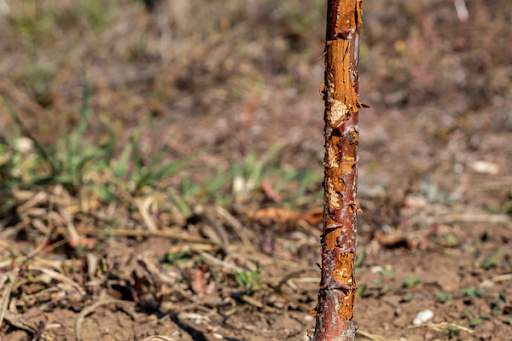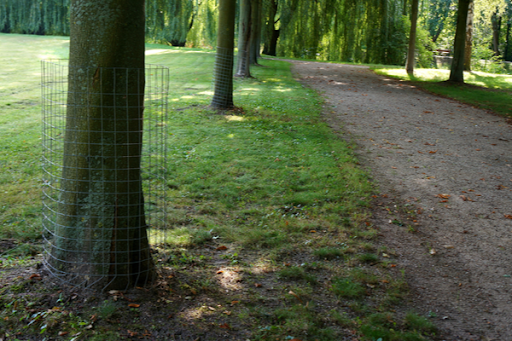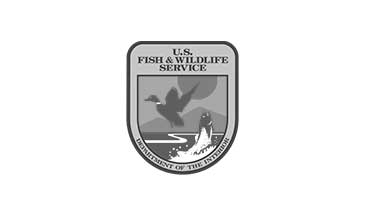Rabbits are herbivores who feed on a wide variety of plant life. They’ll attempt to feed on garden fruits and vegetables, but they eat grass, ornamental plants, and even tree bark, too. Rabbits inflict their most significant damage in fall by chewing on woody plants until they’re more vulnerable to cold.
All of the potential damage rabbits can inflict as pests revolve around food. In fact, most aspects of a rabbit’s life revolve around food. By learning about what rabbits eat, you’ll learn how to keep the potential pests out of your yard. Here’s what you should know about the rabbits eating near you, and how to keep rabbits away:
What do rabbits eat?
Rabbits feed on a wide variety of plant life, including grass, weeds, seeds, flowers, and leaves. They can’t ingest anything meat-based, which means they’re less likely to root through your trash than other wildlife. Rabbits will also eat vegetables and fruit if they can get it, even though these high-sugar foods are bad for them. Rabbits have to eat on the move to stay safe from predators, so they usually choose food that’s easy to access.
A rabbit’s typical diet varies by season. In spring and summer, they’re more likely to eat flowers and vegetables. In fall and winter, they feed on (and damage) woody plants like twigs, stems, or even bark. Most feed on tree trunks, bushes, and shrubs that are a few inches above ground. They won’t dig very deep to get to food but they will eat exposed roots and root vegetables. Believe it or not, the main damage they inflict near homes isn’t on gardens, but nearby woody plants.

Why are they a problem?
Rabbits become a pest problem when their feeding damages flowering, leafy, or growing ornamental plants. This becomes particularly problematic in fall because the resulting damage can make plants more vulnerable to the winter elements. Rabbit’s constant gnawing can damage growing saplings and shrubs in fall and even make established plants vulnerable to weather damage. Rabbit feeding can clip stems, buds, and small branches or even girdle the bark off of larger trees. Young trees are particularly susceptible to rabbit damage.
Rabbits feed on the plants they eat in a particular way. By learning to identify the signs of this particular feeding, you can identify when you have a rabbit problem. They leave ¼ to ⅜ incisor gnaw marks on older woody growths, especially in winter. They will also nip stems at a clean, 45-degree angle. Rabbits tend to leave behind small, pellet-shaped waste wherever they eat, which is both a sign of their presence and a problem of its own.
Why are rabbits near me?
Rabbits have wide-ranging territories that they wander looking for food. Your yard may be part of a rabbit’s territory, but they probably don’t actually live on your property. Rabbits are opportunists looking for easily-accessible food. This is doubly true in fall and especially in winter when their regular food sources become scarce. They're attracted to unprotected gardens, naturally, but many also target growing ferns, shrubs, and other ornamental plants. Later in fall and winter, they’ll begin targeting the bark on trees.
Rabbits can’t afford to spend too much time in any one place. Instead, they move from one food source to another quickly and constantly. They’re looking for open areas that are easy to enter and leave quickly. If your yard is open and your plants are exposed, then they'll use it for food as regularly as possible. Alternatively, they also appreciate areas predators can’t easily access. They love slipping under low fences to feel secure when they eat. If your yard can combine all three of these attractive properties, rabbits will stop by all the time.

How can I keep rabbits from getting food near me?
First thing’s first: identify rabbit food sources around your yard. Specifically, look for any plants that they'll be able to access after it begins to snow. Rabbits tend to target any plants or trees that grow over three inches high. Fence off any ornamental plants, gardens, or even wild grasses to keep them safe from rabbits. You’ll have to make these fences ½ to 1 inch thick, at least 3 feet high, and extending 6 to 10 inches underground.
Unfortunately, fencing off your plants themselves may not be enough. Try wrapping at least four inches of the base of each tree on your property in a protective covering. Make sure this protective cover wraps around the base of the tree completely. You should also add 6 to 10 inches of underground wire mesh to the bottom of any existing fences. Finally, clear your yard of as much natural debris as possible, as often as possible. Rake up leaves, mow your lawn, pick up fallen seeds and fruits, and trim your bushes regularly.
Rabbits might not be the most obviously dangerous or disturbing of pests, but that doesn’t mean they aren’t trouble. If rabbits feed on your plants too much this fall, those plants could die off over the winter. Protecting your garden and yard plants means keeping rabbits from dining on them.
If you’re having trouble keeping rabbits away from you this fall, give Varment Guard a call anytime. Our experts will devise the best plan for keeping rabbits from reaping what you’ve sown. It’s not too late to protect your plants this season, so call now and enjoy your fall with peace of mind.






